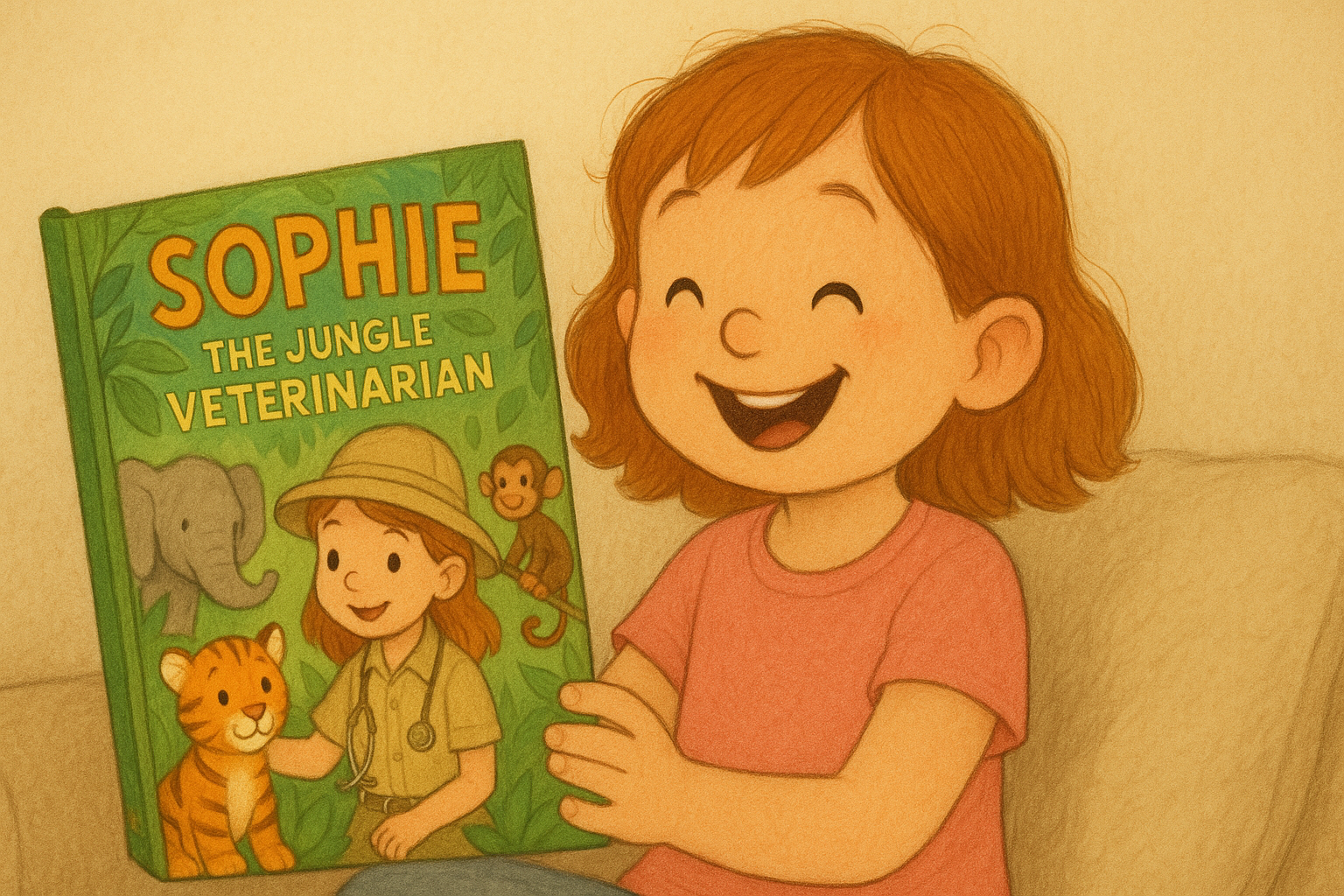For many parents, reading to their child is one of the most treasured parts of the day. A quiet moment to connect, imagine, and explore together. But what if those stories could do even more? What if they could grow with your child, reflect their personality, and spark a genuine love of reading that lasts a lifetime?
In this article, we explore how personalized stories are transforming the way young children experience reading, making it more engaging, meaningful, and developmentally powerful. From building early literacy skills to boosting confidence and creativity, discover how new tools are turning reading time into something even more magical.
This is where technology steps in - not to replace reading, but to reinvent how children read in a generation where screens have taken over.
1. Personalized Stories Make Kids the Heroes
Most children’s books are usually one-size-fits-all. Generative technology allows for a different kind of storytelling, one that adapts to a child’s name, interests, and reading level.
When children see themselves in a story, it increases motivation and comprehension. According to a study by the National Literacy Trust (UK), children who see themselves represented in books are more likely to enjoy reading and feel that reading is for them.¹
Imagine your 6-year-old, Sophie, an aspiring veterinarian, helping animals, learning new concepts, and solving problems in her own jungle-themed adventure. When kids become the heroes of their own stories, they’re more likely to stay engaged during reading time. Even more, seeing themselves succeed in story settings can boost self-confidence and help them visualize their own dreams and future goals.
2. Diversity Without Limits
Representation matters in childhood development. Research shows that diverse books foster empathy and reduce bias in young children.²
Generative storytelling offers an inclusive playground, instantly reflecting different ethnicities, family structures, and abilities. This not only validates every child's identity but also introduces them to lives different from their own, a key part of social-emotional learning.
Children will also feel more encouraged to read when the story reflects their own culture and experiences. Studies have shown that culturally relevant texts increase engagement, comprehension, and motivation to read.³
3. Instant Variety for Reluctant Readers
Children need repeated, varied exposure to vocabulary to develop strong language skills. According to the Harvard Graduate School of Education, frequent and diverse reading experiences lead to better comprehension and retention.⁴
New technological advancements now have the capability to craft a fresh story every night, making reading feel like an adventure, not a chore. For reluctant or picky readers, variety increases the odds of finding stories that spark joy.
4. Learning That Grows With Them
The Zone of Proximal Development, a key idea in educational psychology introduced by Vygotsky (1978), describes the sweet spot for learning: material that’s just challenging enough to promote growth, but not so hard that a child feels frustrated.⁵
Adaptive technology applies this concept by creating stories that match your child's current reading ability while gently pushing them to the next level.
In other words, the stories grow with your child, supporting them at every stage, building confidence, improving fluency, and ensuring they stay engaged instead of feeling overwhelmed or left behind.
5. Supporting — Not Replacing — Human Connection
Reading together is about bonding, not just books. A 2018 study by the American Academy of Pediatrics emphasizes that reading aloud with children builds brain development and strengthens parent-child relationships.⁶
For parents and their book-loving kids, customizable storytelling deepens the connection that co-reading creates. By crafting personalized tales around your child’s unique interests, it invites meaningful conversations, shared laughter, and emotional bonding. Instead of replacing the parent’s role, it empowers you to be an even more engaged storyteller, making each bedtime story a co-created memory that belongs to both of you.
References
- Clark, C., & Teravainen-Goff, A. (2018). Children and young people’s reading in 2018. National Literacy Trust. https://literacytrust.org.uk
- Crisp, T., Knezek, S. M., Quinn, M., Bingham, G. E., Girardeau, K., & Starks, F. (2016). What’s on our bookshelves? The diversity of children’s literature in early childhood classroom libraries. The Reading Teacher, 70(1), 9–19. https://doi.org/10.1002/trtr.1473
- Ladson-Billings, G. (1995). But that’s just good teaching! The case for culturally relevant pedagogy. Theory Into Practice, 34(3), 159–165. https://doi.org/10.1080/00405849509543675
- Harvard Graduate School of Education. (2019, May 14). The science of reading. https://www.gse.harvard.edu/news/uk/19/05/science-reading
- Vygotsky, L. S. (1978). Mind in society: The development of higher psychological processes (M. Cole, V. John-Steiner, S. Scribner, & E. Souberman, Eds.). Harvard University Press.
- American Academy of Pediatrics. (2018). Reading aloud to children: The evidence. https://publications.aap.org

 All Posts
All Posts
